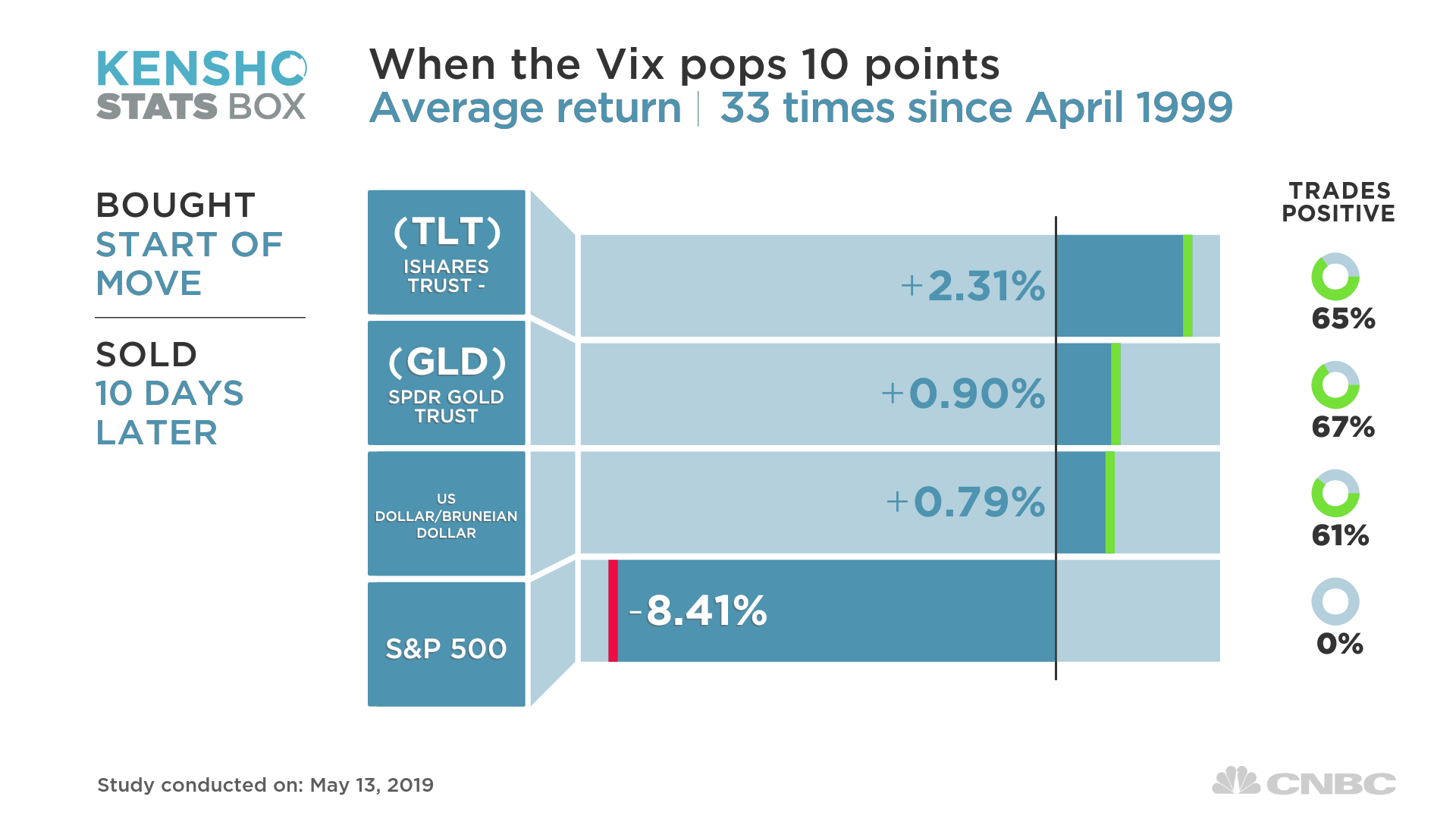Getty Images
With the stock market roiling amid a wave of new barbs between Washington and Beijing, investors are scrambling to figure out where to put money in times of volatility. History shows gold and bonds outperform when fear spreads on Wall Street.
Many on traders and investors believe the selling isn’t over yet. Traders often look at the the Cboe Volatility Index, known as the “VIX” and considered one of the market’s best fear gauges, for sign that capitulation is here and the selling is over.
The index traded up to 20 on Monday, up from lows under 13 on May 3, the last trading day before President Donald Trump announced increased tariffs on Chinese goods.
.1557778807153.jpeg)
“What we really want to see is a degree of fear. To us that degree of fear right now is represented by the VIX trading up to 30, which we think will happen at some point in the near to medium term,” said Julian Emanuel, head of equities and derivatives strategy at BTIG.
If the ‘VIX’ does pop another 10 points like Emanuel predicts, history shows certain exchange-traded funds beat the market.

CNBC analysis using Kensho found that the iShares 20+ Year Treasury Bond ETF returns an average of 2.3% during a 10-point pop in the VIX over a 10-day trading period. The analysis also found that both the SPDR Gold Trust and the iShares Gold Trust outperform with returns of about 0.9% on average during those VIX pops.
“Volatility surged to multi-month highs last week as US-China trade war drama unexpectedly escalated,” Tom Essaye, founder of The Sevens Report, wrote in a note. “The lack of trade agreement does put a headwind on global growth, so I would re-view portfolios and make sure they are insulated from volatility and that would mean rotating out of cyclical sectors and into more defensive sectors.”
A rise in gold often accompanies market pessimism as investors favor metals and the security of government debt for their reliable returns when turbulence rattles the fragile equity markets.
“Yields dropped as you’d expect following the trade volatility and the underwhelming inflation data,” Essaye added. “The 10-year yield fell 9 basis points and closed in the mid-2.40% range, as the global bond market continues to signal disconcerting growth.”
—With reporting by Patti Domm
